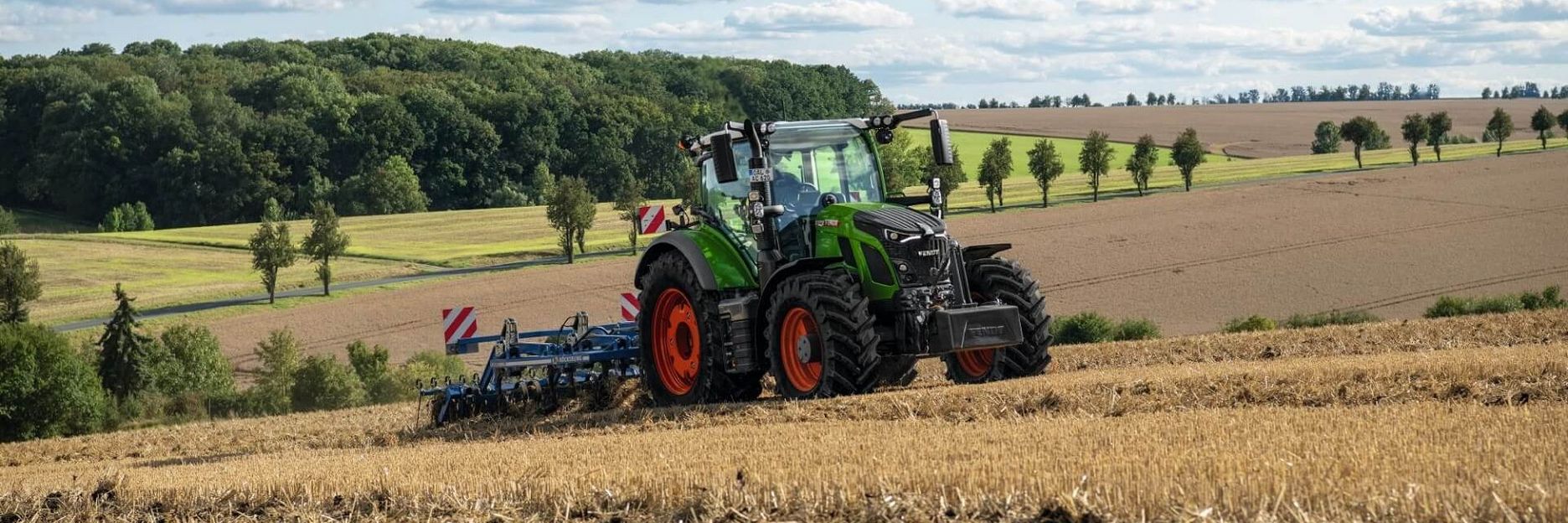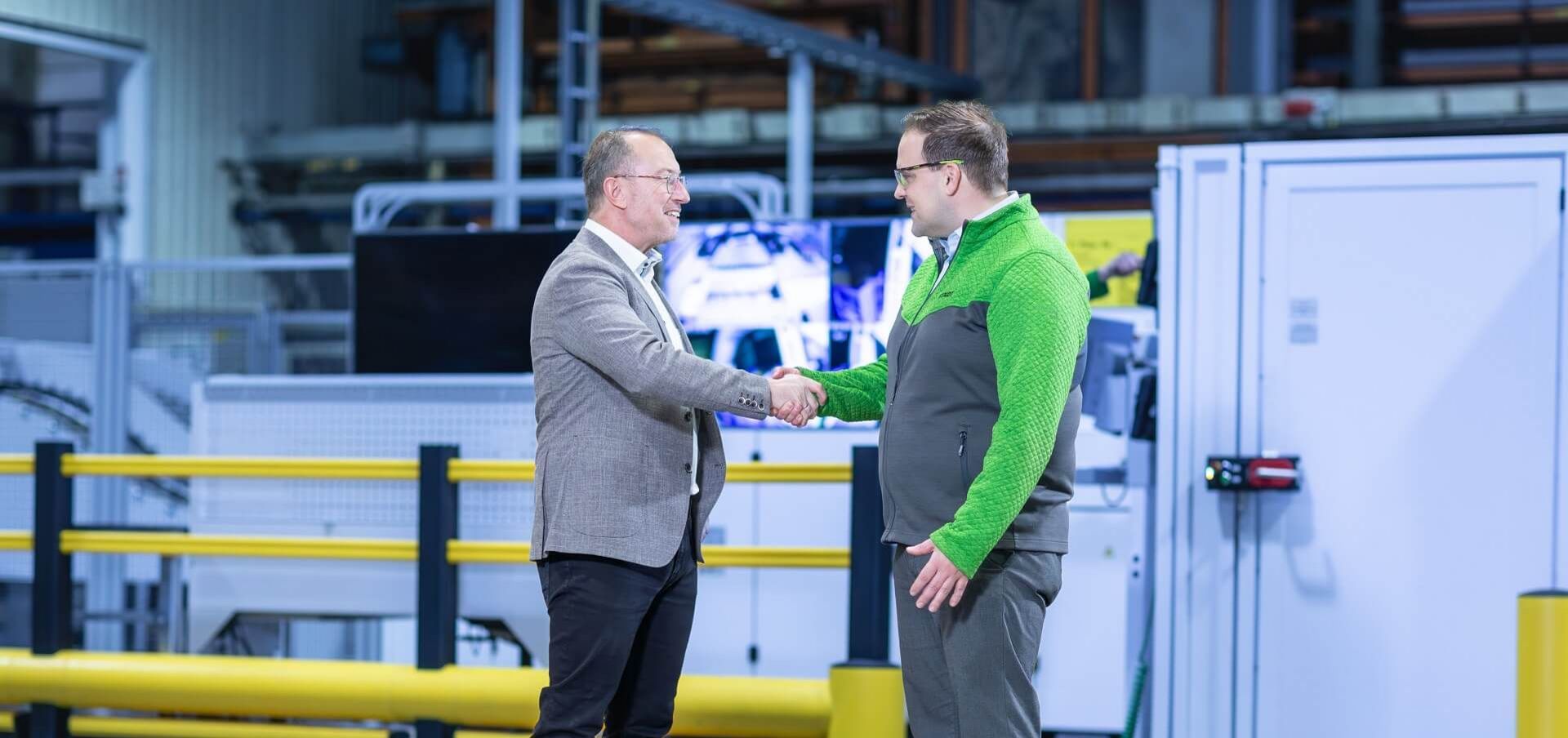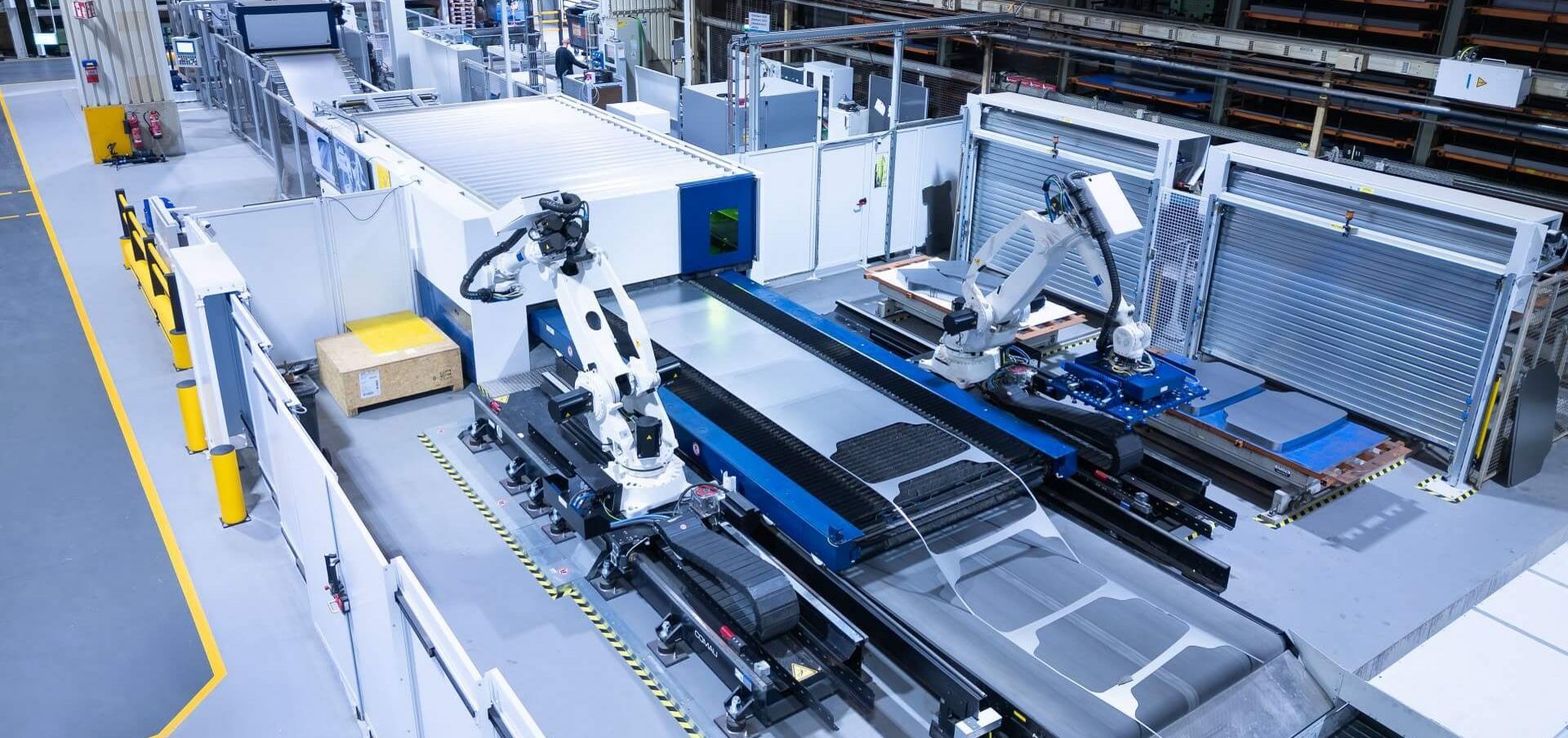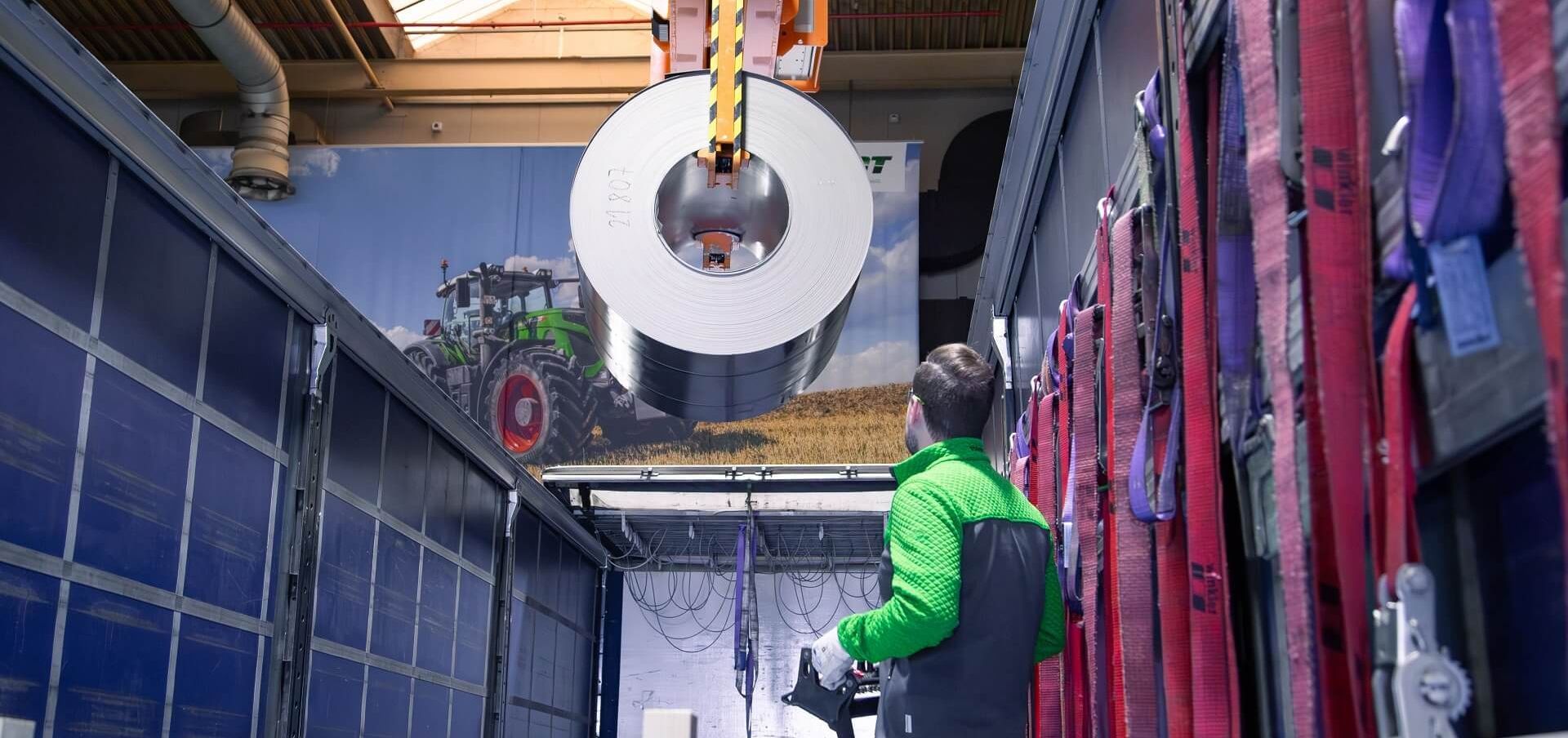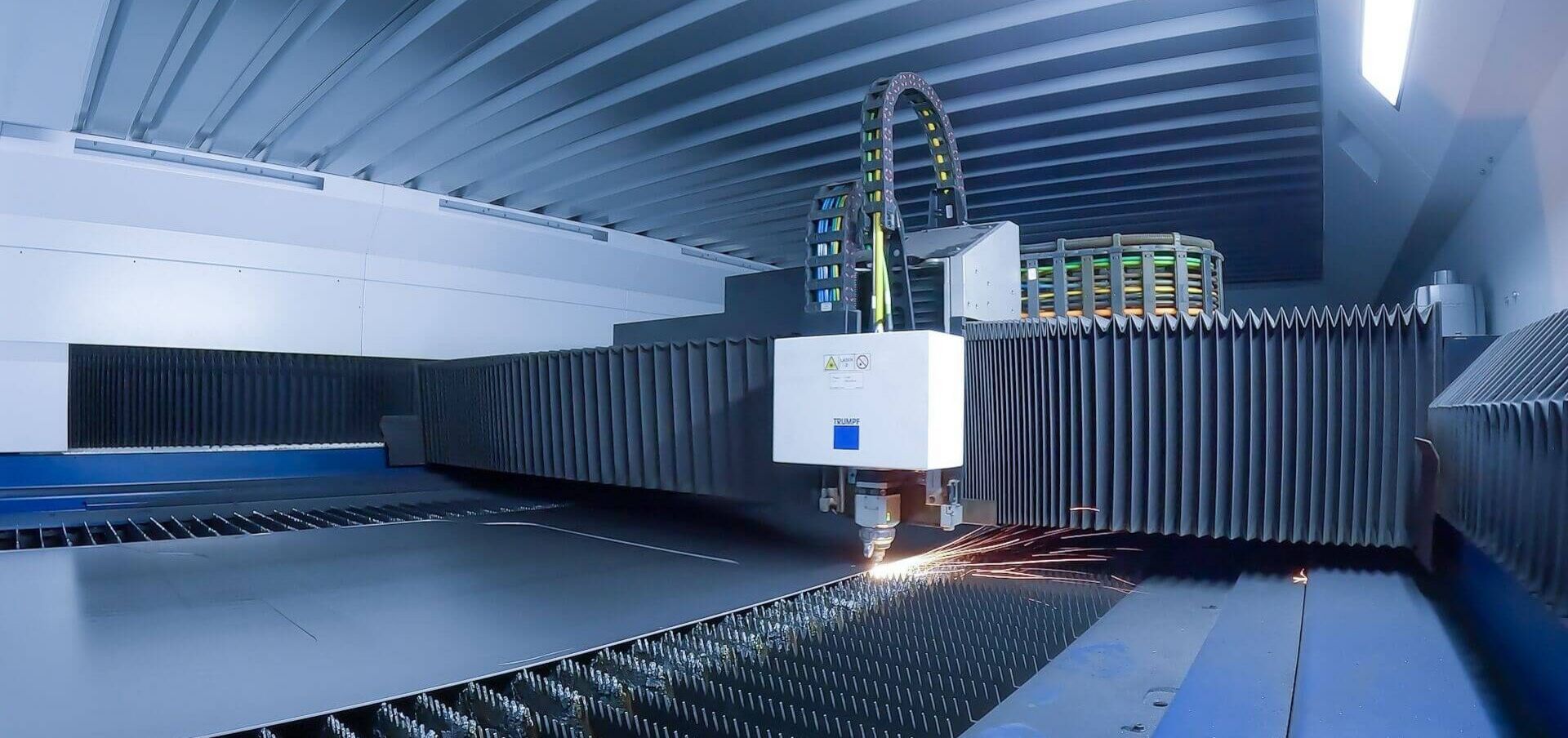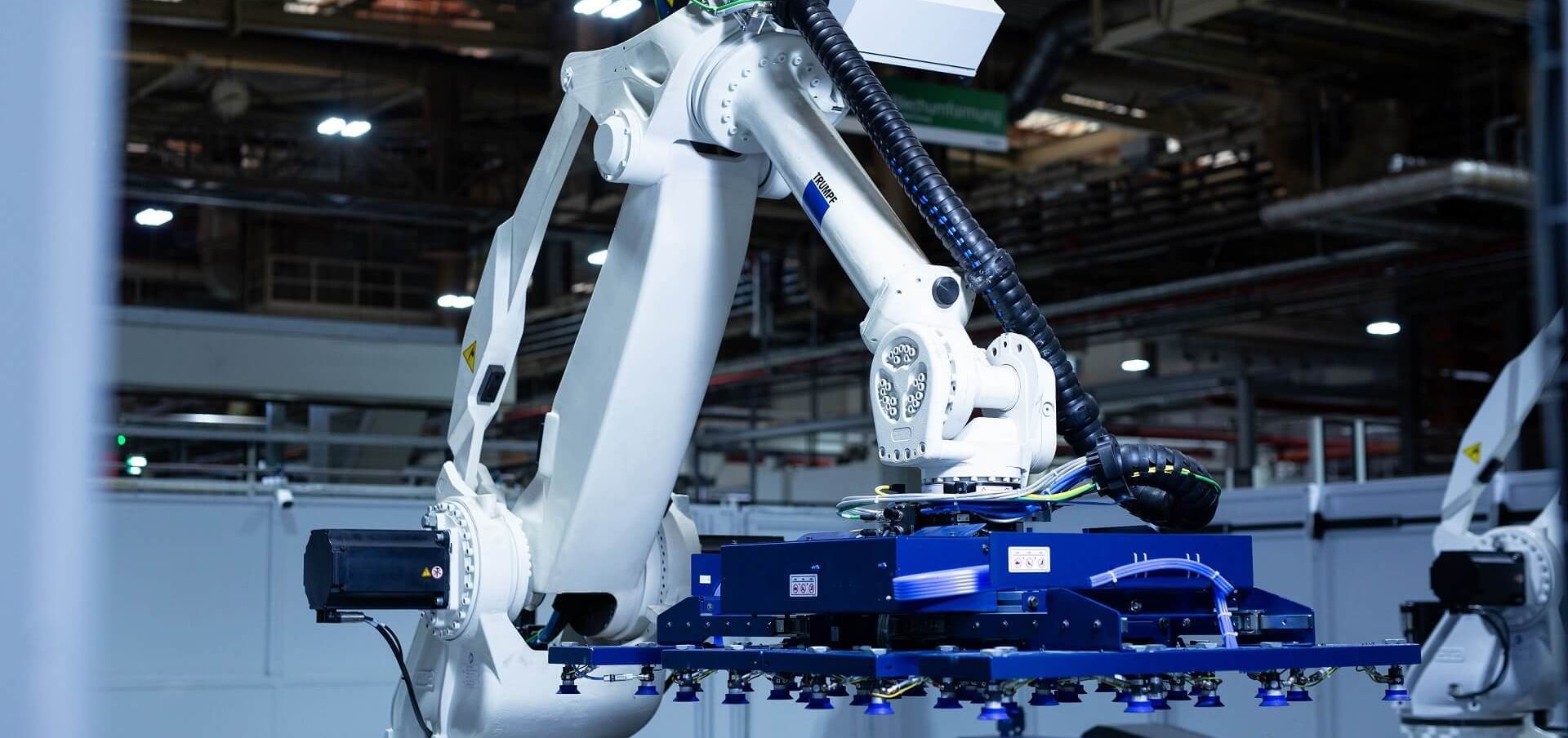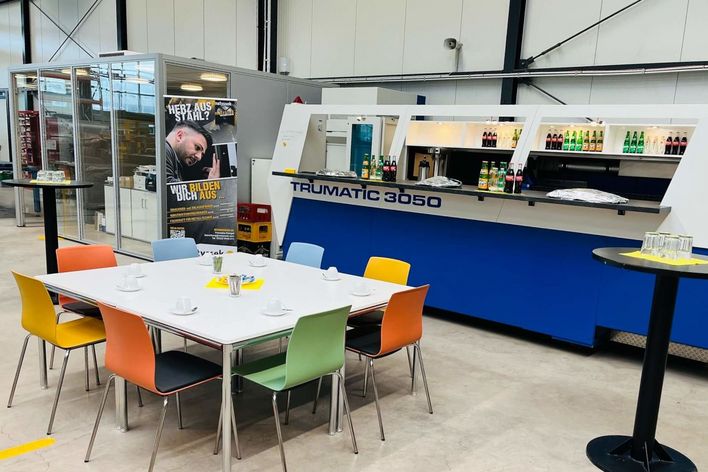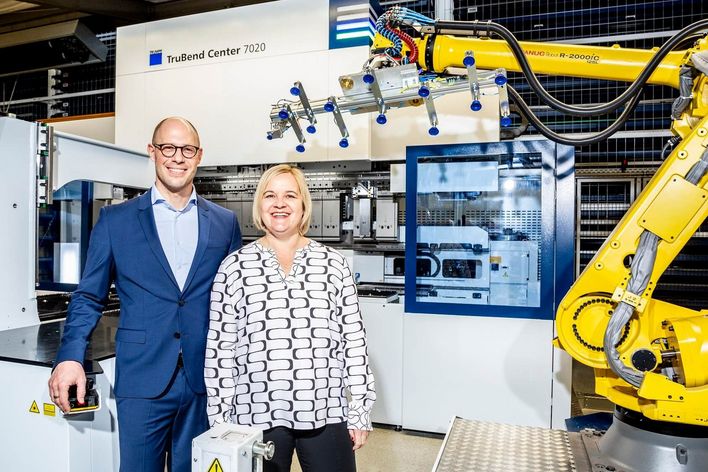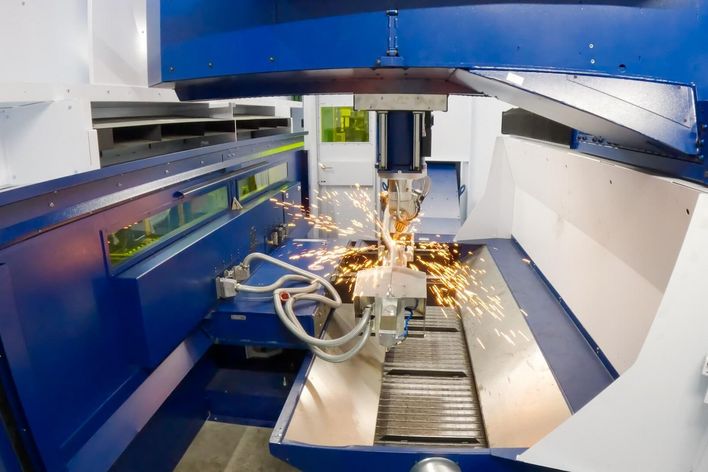Children's eyes light up when a tractor drives by. And what a thrill it is for those who get to ride along or even sit in the driver's seat! Many adults are also instantly captivated by these large agricultural machines. Fendt tractors are popular in many countries around the world. Florian Hammel is responsible for strategic plant and technology development at Fendt's plant in Asbach-Bäumenheim, Bavaria. He is proud to work for the brand and delighted that every single green part you see on a Fendt tractor comes from the company's Bavarian factory.
Hammel and the sheet metal production team manufacture parts including the sheet metal for the outer skin of the cab and engine cover on the large tractors. Previously, a laser flatbed machine with a conventional plate changer cut the contours from the metal sheets. But there came a time when Florian Hammel and his team realised they were working too slowly. Customer demand was increasingly significantly, but the storage capacity in the production area was not. "It was clear that we couldn't expand the factory premises, so we had to work out how to increase our output using the same amount of space," he explains.
Coil loading speeds up the process
Oliver Müllerschön is an expert in laser blanking at TRUMPF. In this process, the system unwinds the sheet metal strip directly from the coil of sheet metal, and feeds it into the laser cutting machine. "This is what customers need when laser cutting isn't productive enough for them – exactly the requirement that Fendt also had. Our colleagues at Fendt were immediately impressed by our new TruLaser 8000 Coil Edition laser blanking system."
But before the Fendt site in Asbach-Bäumenheim accepted the offer, Florian Hammel sat down with his team and meticulously calculated every detail. The first parameter was the time required for the pallet change. The processed sheet is removed from the laser cutting machine and a new one is inserted. "This time is eliminated if we simply unwind a long coil of sheet metal." And how much time does it save? "Around 600 working hours a year that we can then use more productively," says Hammel. "Overall, the total production time of the laser system is increased by around 14%."
More components per metre of sheet metal thanks to laser blanking
That's certainly impressive, but Müllerschön pointed out another aspect: "A sheet metal panel comes to an end after three or four metres, so there is only limited space for larger components and the off-cuts end up in the waste." The situation is different when cutting directly from the coil: "The sheet is virtually infinite, and the parts can be nested more effectively. To put it simply, you get more components per purchased metre of sheet metal." Hammel also wanted detailed statistics for this, so used his real contours to calculate the difference between sheet and coil production: "We use around 20% less material to achieve the same result! In addition, the purchase price of coils is also lower than that of pre-plated goods," explains Fendt's planner.
Swap crane lift for warehouse trips
But even the longest coil comes to an end and you need to purchase a new one, just like with sheet metal pallets. Only, in this case, the replacement occurs more frequently throughout the day with sheet metal packages. Here, too, Hammel calculated how the new TruLaser 8000 Coil Edition would alter his work processes: "We move the sheet metal packages from the truck into the warehouse, out into production if required, to the machine, etc. That's a total of five storage trips per provision." And with the coil? "One crane lift. So we replace five forklift trips with one crane lift from the truck into the laser blanking system. This eliminates around 2,400 storage trips per year." His calculations were decisive in convincing the Fendt site in Asbach-Bäumenheim to opt for the laser blanking system.
Conversion to coil pays for itself in no time
Then the moment arrives: the first truck carrying coils pulls into the Fendt plant's loading area for the very first time. The overhead crane loads the TruLaser 8000 Coil Edition. The sheet unwinds and is pulled into the cutting chamber. The laser cutting head whizzes across the sheet metal and cuts the contours. After the cutting chamber, two unloading robots remove the components from the conveyor belt and set them down carefully. The small amount of waste is automatically transported to the container outside. Parts production keeps on running. Florian Hammel is content: "The nesting allows us to utilise sheet metal so efficiently. And we simply have more output with less effort. "The laser blanking system very quickly pays for itself," Hammel grins. "I won't tell you how fast, of course. But I've worked that out too, and it's really fast."

